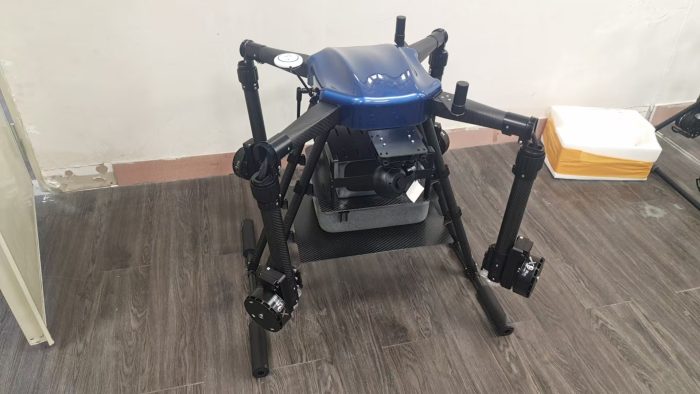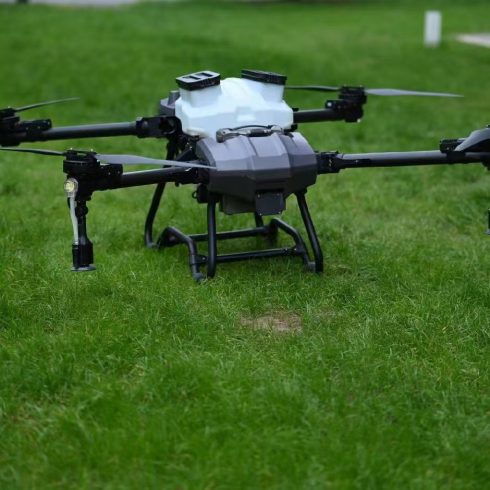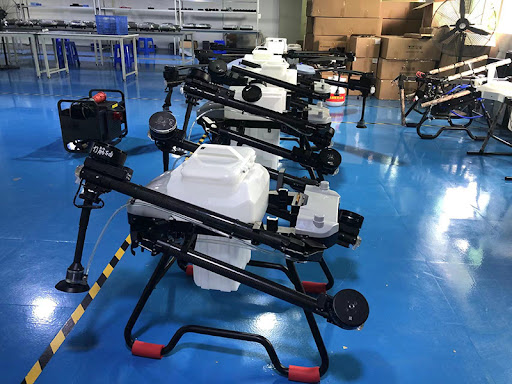![图片[1]-The Silent Revolution: How AI-Powered Spray Drones Are Reshaping Global Agriculture-msoen](https://www.msoen.com/wp-content/uploads/2025/04/4e0d9ec2ca214327.jpg)
Target Keywords: AI pesticide drones, autonomous crop spraying, precision agrochemical application, sustainable farming drones, smart agriculture technology
The Imperative for Precision in Modern Farming
Global pesticide waste exceeds $30 billion annually, with 60% of chemicals failing to reach target crops due to wind drift and outdated application methods (FAO, 2024). Climate volatility and shrinking farm labor pools exacerbate these challenges. AI-driven spray drones are emerging as a transformative solution, combining robotics, machine learning, and environmental science to deliver surgical precision in crop protection.
This article explores how next-generation drones are enabling 40% chemical reduction, 28% yield improvements, and compliance with stringent regulations like the EU’s Farm to Fork pesticide reduction targets.
Breakthrough Technologies Defining the Future
- Cognitive Field Mapping Systems
Advanced drones utilize:
LiDAR-powered 3D terrain modeling: Creates centimeter-accurate elevation maps for slope-adaptive spraying
Quantum dot sensors: Detect early pest infestations through chlorophyll fluorescence changes (99% accuracy)
Edge AI processors: Analyze 200+ data points per second to adjust spray patterns in real time
A 2024 Stanford trial demonstrated drones reduced fungicide use in vineyards by 48% while maintaining disease control.
- Self-Optimizing Swarm Intelligence
Drone fleets deploy:
Distributed autonomy algorithms: Enable collective decision-making without centralized control
Dynamic airspace management: Prevent collisions while maintaining 10cm spacing between units
Adaptive charging protocols: Solar-powered docking stations enable 24/7 operations
- Nanotech Delivery Systems
Patented innovations include:
Electrostatic micro-droplets: Improve leaf adhesion by 70%
pH-responsive nanocapsules: Release pesticides only upon contact with pest digestive enzymes
Biodegradable drone components: 95% plant-based polymers for eco-friendly end-of-life disposal
Quantifiable Impact Across Farming Sectors
- Economic Transformation
Brazilian soybean farms: $34/acre chemical savings + 12% yield boost via growth-stage-specific spraying
California almond orchards: 62% reduction in bee-harming neonicotinoid use through nocturnal drone applications
- Environmental Stewardship
Water conservation: 90% reduction in carrier water vs. tractor sprayers
Carbon neutrality: Hydrogen fuel cell drones emit only H₂O vapor (3kg CO₂e/ha vs. 19kg for diesel systems)
Biodiversity protection: 83% lower off-target chemical deposition protects pollinators
- Regulatory Compliance
Automated generation of ISO 16119-compliant spray records
Real-time drift monitoring aligned with EPA 40 CFR Part 170
Pioneering Global Applications
Case 1: Rice Intensification in Southeast Asia
Vietnamese cooperatives achieved:
35% reduction in rice blast disease through hyperlocal drone fungicide deployment
$18/ton production cost savings via precise nutrient-pesticide synergies
Case 2: Precision Viticulture in Europe
Tuscan vineyards leveraged:
Multispectral disease prediction models (3-day early warning)
50% lower copper-based fungicide use while maintaining DOCG quality standards
The 2025 Horizon: Emerging Frontiers
- Biohybrid Drone Swarms
Pollinator drones for simultaneous pest control and crop pollination
Mycorrhiza-delivery systems for soil health enhancement
- AI-Generated Agrochemistry
Onboard pesticide synthesis matching real-time pest resistance profiles
Self-degrading “smart chemicals” activated only by target pathogens
- Quantum-Enhanced Field Intelligence
Entanglement-based soil moisture mapping at 10km² resolution
Predictive pest migration models with 98% 14-day accuracy
Call to Action
Empower your agricultural operations with our AI-Driven Spray Drone Solutions. Book a free consultation to design a customized precision farming roadmap.
Meta Description: Discover AI-powered spray drones that reduce pesticide use by 40% while increasing yields. Explore quantum sensors, biodegradable drones, and self-optimizing swarm systems for sustainable farming.












暂无评论内容